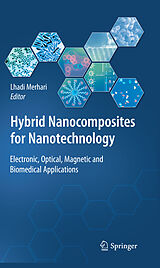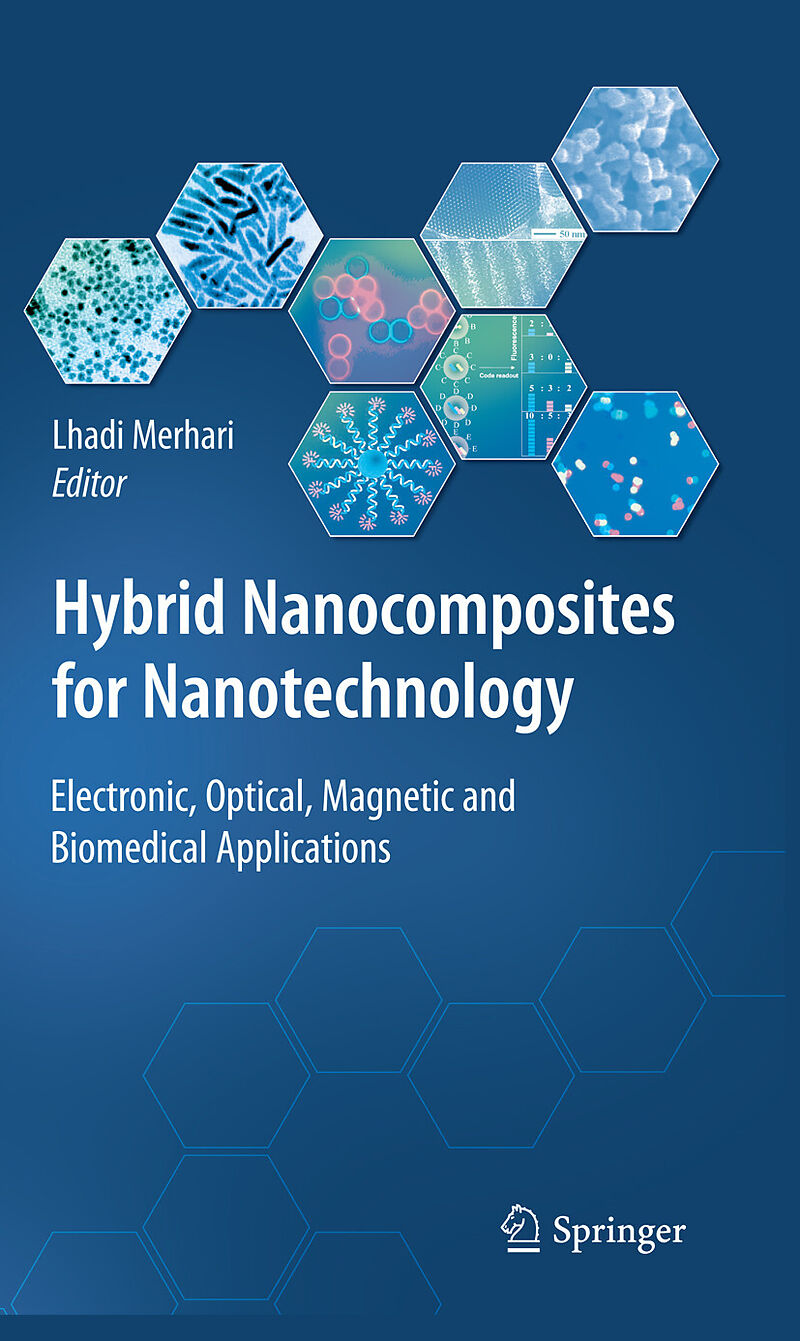Hybrid Nanocomposites for Nanotechnology
Format:
E-Book (pdf)
EAN:
9780387304281
Untertitel:
Electronic, Optical, Magnetic and Biomedical Applications
Genre:
Physik, Astronomie
Herausgeber:
Springer
Anzahl Seiten:
847
Erscheinungsdatum:
03.03.2009
ISBN:
978-0-387-30428-1
Hybrid Nanocomposites for Nanotechnology: Electronic, Optical, Magnetic and Biomedical Applications introduces readers to the complex development of new functional organic-inorganic nanomaterials and explores their non-traditional applications. The traditional application of these nanocomposites has been the reinforcement of plastics by the addition of inorganic fillers, exploiting the enhancement of mechanical properties for commodity plastics. Hybrid nanocomposites provide an attractive, versatile, technological platform for emerging high-added-value applications such as photovoltaic cells and light-emitting devices, lithium-ion batteries, supercapacitors, and biosensors. Composed of seventeen chapters written by leading international authors, this book covers topics such as: Synthesis of a wide range of hybrid nanocomposites based on methods including sol-gel techniques and surface grafting of nanoparticles. In-depth nanocomposite characterizations via DLS, DSC, FTIR, MALDI, NMR, SANS, SAXS, SEC, SEM, TEM, TGA, WAXS techniques. Optimization of fullerene-based resists for nanolithography. Strategies for hermetic coatings and advanced packaging of integrated circuits. Development of bioactive bone cements and drug-delivery systems. Fabrication of optical, electrochemical and magneto-biosensors. With over 2500 bibliographic citations, Hybrid Nanocomposites for Nanotechnology: Electronic, Optical, Magnetic and Biomedical Applications is an invaluable resource for scientists, engineers, and researchers in a wide variety of disciplines including materials science, surface chemistry, energy and data storage, photonics, microelectronics, pharmacy, medicine, biotechnology and bioengineering.
Zusammenfassung
With the advent of nanoscience and nanotechnology, the dream of scientists to engineer new functional materials combining the best specific properties of organic and inorganic materials is closer to reality. The traditional targeted application has been the reinforcement of plastics with the addition of inorganic fillers. Accelerated research over the past two decades, as evidenced by the large bulk of literature on mechanical properties of organicinorganic composites, focused on systems such as clay/polymer nanocomposites, which are now exploited by the automotive industry worldwide. Although, in the low filler loading range, clay/polymer na- composites can replace traditional fiber-reinforced composites, there is still a long way to go before understanding the mechanisms of enhancement of major en- neering properties of polymers and to tailor their nanostructure. The driving force to edit the present comprehensive book has been to show that the applications of organicinorganic nanocomposites extend far beyond the above-mentioned traditional mechanical applications and that hybrid nanoc- posites should be considered as an attractive, versatile, technological platform for future electronic, optical, magnetic, and biomedical applications. Indeed, taking up challenges such as homogeneous dispersion of inorganic nanoobjects into a polymer matrix or tailoring of the multiscale nano-to-macro structure of the c- posites will contribute to the establishment of a solid unified hybrid nanocomp- ite technological platform for commercially-viable products revolutionizing various industrial sectors. The generally-accepted definition of a hybrid nanocomposite is a material created by dispersing inorganic nanoparticulates into a macroscopic organic matrix.
Inhalt
Epoxy-silica/silsesquioxane Polymer Nanocomposites.- Scale-Up Synthesis of Polymer-Grafted Nanoparticles in Solvent-Free Dry-System and in Ionic Liquid.- InorganicOrganic Hybrid Porous Materials.- Synthesis of Mechanically Flexible OrganicInorganic Hybrid Nanocomposites from Polydimethylsiloxane and Metal Alkoxides.- Structural Characterization of Hybrid OrganicInorganic Nanocomposites: X-ray.- Development of Hybrid Nanocomposites for Electronic Applications.- Next-Generation Hybrid Nanocomposite Materials Based on Conducting Organic Polymers: Energy Storage and Conversion Devices.- Hybrid Polymer-Inorganic Photovoltaic Cells.- Fullerene Nanocomposite Resists for Nanolithography.- SolGel Hybrids for Electronic Applications: Hermetic Coatings for Microelectronics and Energy Storage.- PolymerIron Oxide Based Magnetic Nanocomposites.- OrganicInorganic Hybrids for Light-Emitting Devices and Integrated Optics.- Highly Photosensitive SolGel Hybrid Nano Materials for Direct Photo-Fabrication of Micro-Optical Elements.- Photonic Structures of Luminescent Semiconductor Nanocrystals and Spherical Microcavities.- Biomedical Applications of OrganicInorganic Hybrid Nanoparticles.- Development of Bioactive OrganicInorganic Hybrids Through SolGel Processing.- Silica SolGel Biocomposite Materials for Sensor Development.

Leider konnten wir für diesen Artikel keine Preise ermitteln ...
billigbuch.ch sucht jetzt für Sie die besten Angebote ...
Die aktuellen Verkaufspreise von 3 Onlineshops werden in Realtime abgefragt.
Sie können das gewünschte Produkt anschliessend direkt beim Anbieter Ihrer Wahl bestellen.
Loading...
Die aktuellen Verkaufspreise von 3 Onlineshops werden in Realtime abgefragt.
Sie können das gewünschte Produkt anschliessend direkt beim Anbieter Ihrer Wahl bestellen.
| # | Onlineshop | Preis CHF | Versand CHF | Total CHF | ||
|---|---|---|---|---|---|---|
| 1 | Seller | 0.00 | 0.00 | 0.00 |
